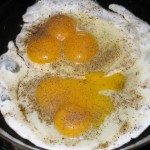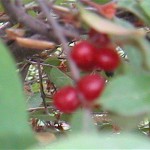by Catherine Haug
(photo, right, by Keith Blaylock)
By now we all know the truth about commercial eggs: the hens are confined to tight and unclean spaces, with little or no access to the outdoors, and they produce eggs of inferior nutritional quality (see my post Eggs: A Buyers Guide). But what about Organic eggs – can we trust the Organic label?
The Cornucopia Institute recently published their review of 77 Organic egg producers/labels across the country, based on 22 criteria across 9 categories, then ranked the brands from 1 to 5 eggs See:
- Scrambled Eggs: Separating Factory Farm Egg Production from Authentic Organic Agriculture for the full report, or
- Video: Scrambled Eggs Report for a 5-minute summary).
You will be happy to note that Mission Mountain Eggs from Ronan MT ranked 5 eggs, their highest rating (these are sold at Bigfork Harvest Foods).
Unfortunately, Cornucopia researchers found that: “Some of the factory farm operators literally raise millions of birds (both conventional and organic) with as many as 85,000 “organic” hens in single buildings.”
Remember that if you don’t raise your own, the absolutely best and freshest eggs come from a neighbor who raises them in pasture. See Who Is Your Farmer? (Farm Hands)? (more…)


